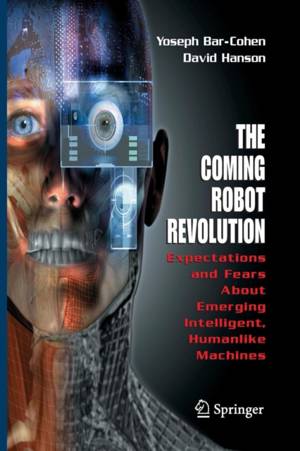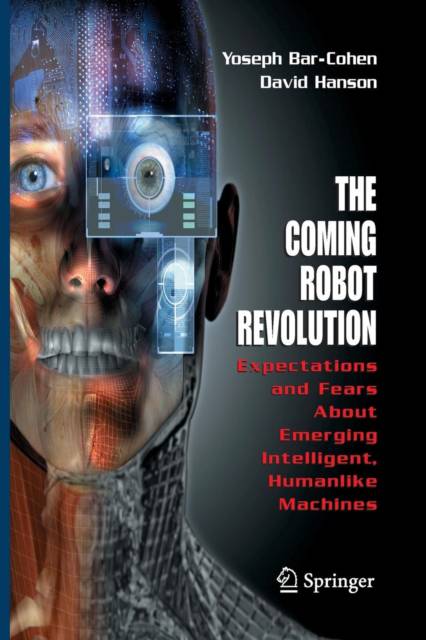
- Afhalen na 1 uur in een winkel met voorraad
- Gratis thuislevering in België vanaf € 30
- Ruim aanbod met 7 miljoen producten
- Afhalen na 1 uur in een winkel met voorraad
- Gratis thuislevering in België vanaf € 30
- Ruim aanbod met 7 miljoen producten
Zoeken
The Coming Robot Revolution
Expectations and Fears about Emerging Intelligent, Humanlike Machines
Yoseph Bar-Cohen, David Hanson
Paperback | Engels
€ 41,95
+ 83 punten
Uitvoering
Omschrijving
Making a robot that looks and behaves like a human being has been the subject of many popular science fiction movies and books. Although the development of such a robot facesmanychallenges, themakingofavirtualhumanhaslongbeenpotentiallypossible. With recent advances in various key technologies related to hardware and software, the making of humanlike robots is increasingly becoming an engineering reality. Development of the required hardware that can perform humanlike functions in a lifelike manner has benefitted greatly from development in such technologies as biologically inspired materials, artificial intelligence, artificial vision, and many others. Producing a humanlike robot that makes body and facial expressions, communicates verbally using extensive vocabulary, and interprets speech with high accuracy is ext- mely complicated to engineer. Advances in voice recognition and speech synthesis are increasingly improving communication capabilities. In our daily life we encounter such innovations when we call the telephone operators of most companies today. As robotics technology continues to improve we are approaching the point where, on seeing such a robot, we will respond with ''Wow, this robot looks unbelievably real!'' just like the reaction to an artificial flower. The accelerating pace of advances in related fields suggests that the emergence of humanlike robots that become part of our daily life seems to be imminent. These robots are expected to raise ethical concerns and may also raise many complex questions related to their interaction with humans.
Specificaties
Betrokkenen
- Auteur(s):
- Uitgeverij:
Inhoud
- Aantal bladzijden:
- 173
- Taal:
- Engels
Eigenschappen
- Productcode (EAN):
- 9781493939343
- Verschijningsdatum:
- 23/08/2016
- Uitvoering:
- Paperback
- Formaat:
- Trade paperback (VS)
- Afmetingen:
- 156 mm x 234 mm
- Gewicht:
- 272 g

Alleen bij Standaard Boekhandel
+ 83 punten op je klantenkaart van Standaard Boekhandel
Beoordelingen
We publiceren alleen reviews die voldoen aan de voorwaarden voor reviews. Bekijk onze voorwaarden voor reviews.








